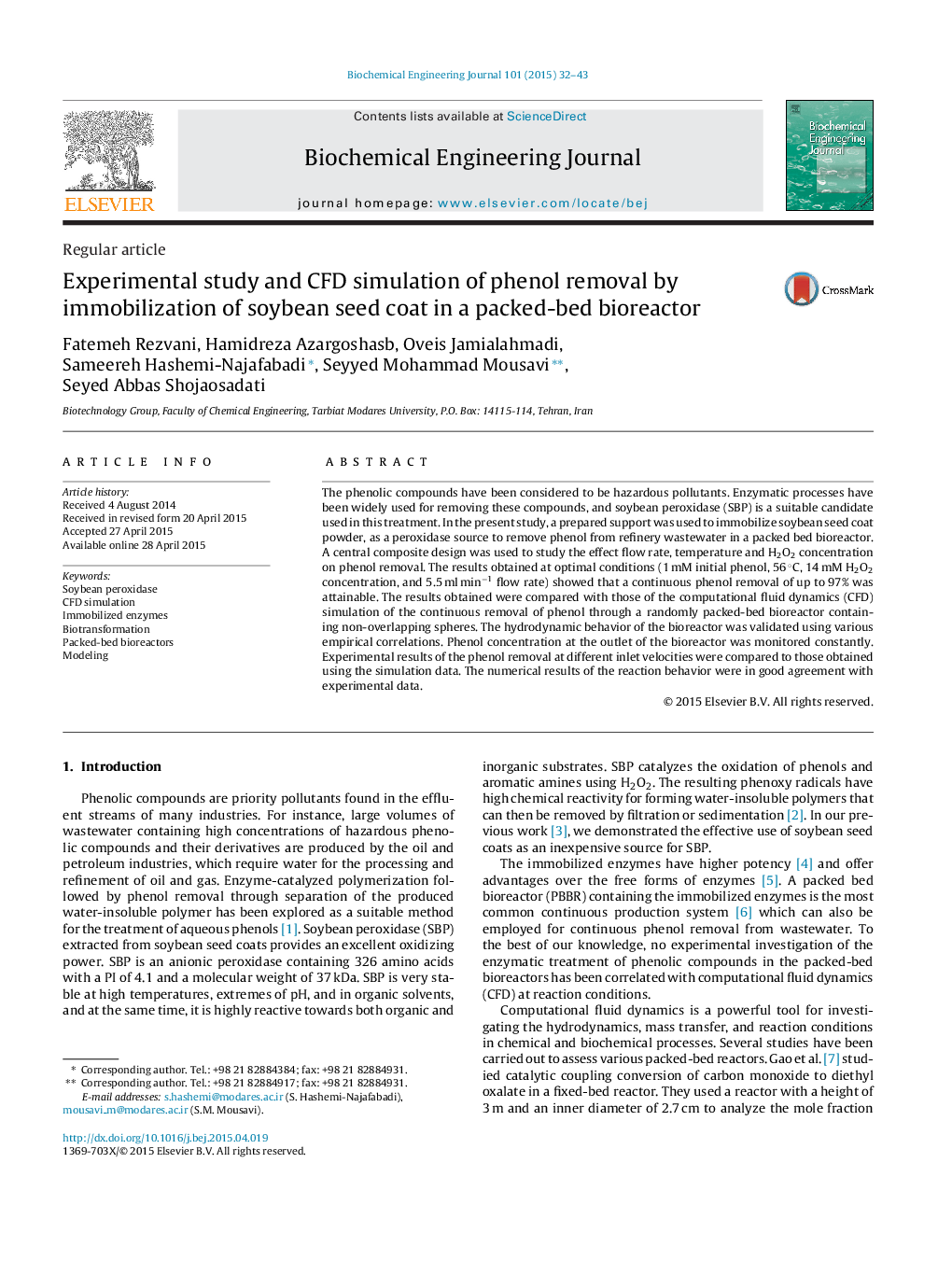| Article ID | Journal | Published Year | Pages | File Type |
|---|---|---|---|---|
| 2839 | Biochemical Engineering Journal | 2015 | 12 Pages |
•A support was used to immobilize soybean seed coats for phenol removal in a PBBR.•Temperature had a significant effect and flow rate was highly effective.•Continuous phenol removal was simulated numerically using the CFD techniques.•Hydrodynamic behavior of the bioreactor was validated using empirical correlations.•Porosity plays a key role in hydrodynamics and the reaction behavior of the PBBR.
The phenolic compounds have been considered to be hazardous pollutants. Enzymatic processes have been widely used for removing these compounds, and soybean peroxidase (SBP) is a suitable candidate used in this treatment. In the present study, a prepared support was used to immobilize soybean seed coat powder, as a peroxidase source to remove phenol from refinery wastewater in a packed bed bioreactor. A central composite design was used to study the effect flow rate, temperature and H2O2 concentration on phenol removal. The results obtained at optimal conditions (1 mM initial phenol, 56 °C, 14 mM H2O2 concentration, and 5.5 ml min−1 flow rate) showed that a continuous phenol removal of up to 97% was attainable. The results obtained were compared with those of the computational fluid dynamics (CFD) simulation of the continuous removal of phenol through a randomly packed-bed bioreactor containing non-overlapping spheres. The hydrodynamic behavior of the bioreactor was validated using various empirical correlations. Phenol concentration at the outlet of the bioreactor was monitored constantly. Experimental results of the phenol removal at different inlet velocities were compared to those obtained using the simulation data. The numerical results of the reaction behavior were in good agreement with experimental data.
